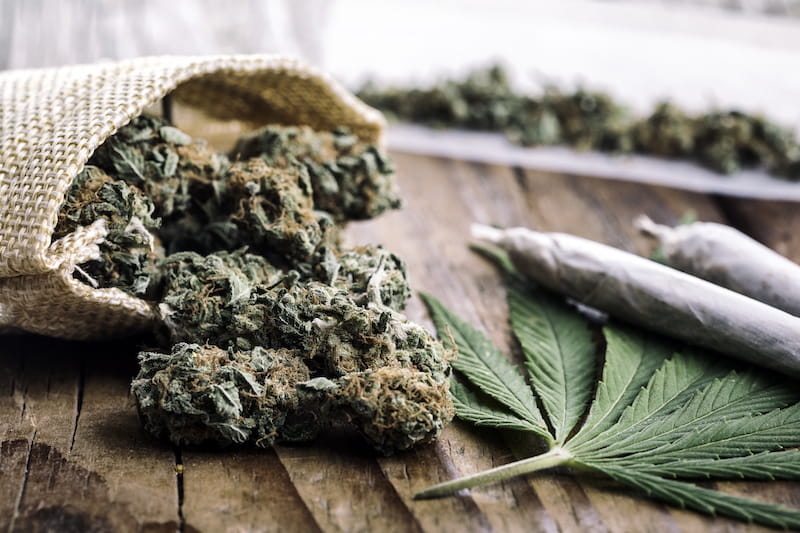Legalizing Marijuana in California: Drexel Researcher Receives NIH Funding to Study Policy's Effects on Young Adults

- Drexel Selects New, World-Class Life Sciences Building at 3201 Cuthbert Street for Medical Research Operations
- Breakthrough on Gene Therapy for Hereditary Spastic Paraplegia
- Drexel Environmental Collaboratory Releases Cross-Sector Findings on Severe Weather Recovery Challenges
- Drexel Launches the Manuel Stamatakis Center for Alternative Investments at the LeBow College of Business

A Drexel University-led research project aimed at studying the health and behavioral effects of medical marijuana use for young adults living in Los Angeles has been renewed for another five years. The project offers a unique opportunity for researchers to track how the state’s changing cannabis laws are impacting public health.
California became the first state to establish a medical marijuana program in 1996. In 2013, the National Institutes of Drug Abuse (NIDA) funded the Cannabis, Health, and Young Adults (CHAYA) research project in an effort to better understand the health and social effects of the law. The longitudinal study followed 18 to 26-year-olds — 210 medical cannabis patients and 156 non-patients who used marijuana recreationally — for four years.
Through a series of interviews and surveys, the researchers assessed the study volunteers’ drug usage, health and risk behaviors. The project was the first of its kind to look at the habits and health outcomes of medical cannabis use within this age group. One goal was to uncover whether the legalization of medical marijuana led to safer, more controlled use of the drug for patients when compared to non-patient users.
Now, following California’s legalization of recreational marijuana use in 2016 and sales in 2018, NIDA has awarded the CHAYA investigators $4.1 million to recruit a new cohort of study volunteers and continue tracking the first group of young adults, some of whom are now ages 25 to 30.
“We’ll have four years of data prior to the change in California’s cannabis law, and four more years of data following, so we will have a comprehensive picture of how this policy change has affected the health and drug use of young people,” said Stephen Lankenau, PhD, a professor at Drexel’s Dornsife School of Public Health and the principal investigator of the CHAYA project.
All young adults enrolled in the latest study will participate in four additional follow-up interviews at one-year intervals directed by collaborators Ellen Iverson, and Carolyn Wong, PhD, at Children’s Hospital Los Angeles. Around 60 of the young adults will participate in three waves of qualitative interviews. A community advisory board comprised of stakeholders in Los Angeles will advise the study investigators on research strategies, findings and implications for policy and practice.
“Once cannabis became legal, a common thought pattern is that everyone is going to use it, and bad things will happen,” Lankenau said. “What we’re interested in seeing is, how do rates of cannabis use among young people actually change following this legalization? What are the factors that contribute to safer use? Are there experiences that may make some young adults better equipped to use it more safely?”
Lankenau and his colleagues have already published a diverse collection of data from the first four years of the study.
They found, for instance, that the “gateway effect” theory — which purports that the use of cannabis can increase the chances of using harder drugs – did not hold up in this case. Though young adult medical marijuana patients reported significantly greater recent use of the drug than their counterparts who used marijuana for non-medical purposes, the medical marijuana patients misused prescription drugs at lower rates.
Additionally, the researchers found that becoming a medical marijuana user was influenced by a “self-discovery” process for a majority of patients, in which they discovered the medical benefits of cannabis while using the drug recreationally early in adolescence, typically individually or apart from other marijuana users. After they became patients, their interactions with dispensary staff and other patients resulted in more sophisticated medical use of cannabis, such as a better understanding of strains, potency and effects. Finally, the researchers found that medical marijuana patients were significantly more likely to report a range of health conditions and motivations associated with medical use than non-patients. This suggests that young adults’ motivations for use were consistent with California’s cannabis law at the time of the study.
In this next phase of the study, the investigators plan to continue looking at the over-arching topics of how marijuana laws affect both medical marijuana patients and non-patients, while also zeroing in on more specific questions, such as whether marijuana policies can reduce opioid consumption. They will also observe whether the legalization of marijuana affects the number of users who drive under the influence. Sprawling Los Angeles is a perfect place to observe trend, since most of its young adults or own or drive vehicles. Lankenau and his team also plan to look usage of “high-potency” forms of marijuana, such as edibles, and how those may influence health outcomes.
The research team hypothesizes that legalizing cannabis for personal use will increase cannabis use, other drug use, and risk behaviors among young adult cannabis users, but this increase will vary by patient status (patient vs. non-patient) and orientation towards cannabis use.
“Our long-term goal of the continuing investigation is to inform public policy with study findings on safer and controlled use of cannabis among young adults,” Lankenau said.
In This Article
Contact
Drexel News is produced by
University Marketing and Communications.